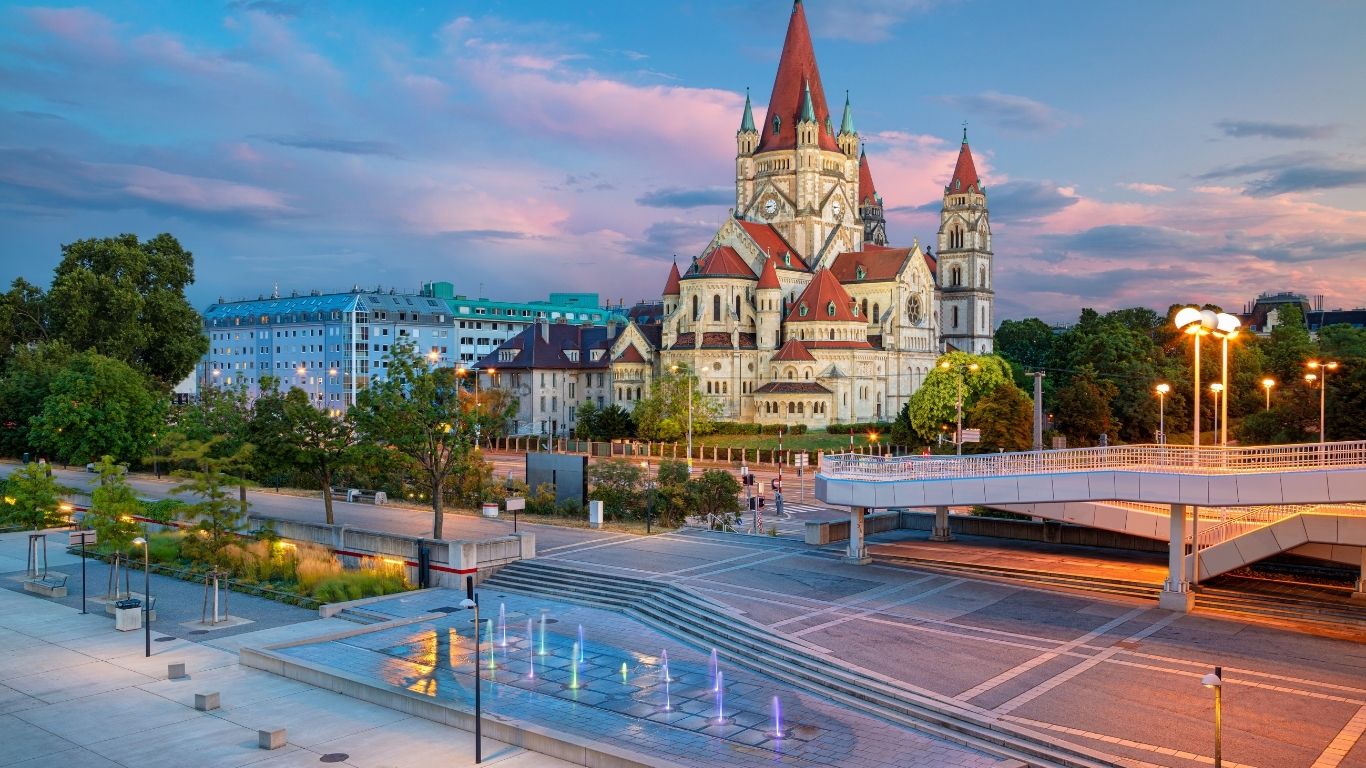
Where to Take the Best Photos in Vienna? Our 10 Must-See Spots
Our 10 Must-See Spots for Picture-Perfect Memories
Austria consists of nine federal states, with Vienna as its capital and most populated city. With slightly over two million residents, it is the primate city of Austria. Vienna is the most populated city on the Danube River, the nation's cultural, economic, and political hub, and the fifth-largest city in the EU by population. It has a ton of beautiful locations! Although it is difficult to pick just ten, we have compiled a list of our top ten locations for stunning photos while you're there.
We're sharing our top picks for breathtaking photo spots in Vienna in this guide. In order to avoid crowds and capture the ideal light, we also advise you on the best time and method to visit each location.
Let's take a tour of the city's most picturesque locations, ideal for making memories along the way.
1. Schönbrunn Palace & Gardens
Situated in Hietzing, the 13th district of Vienna, Schönbrunn Palace served as the Habsburg kings' principal summer retreat. The court drank water from an artesian well, which is where the name Schönbrunn originates. One of the nation's most significant architectural, cultural, and historic landmarks is the 1,441-room Baroque palace. The palace and its expansive grounds have a 300-year history that reflects the shifting preferences, passions, and goals of the Habsburg kings who came before them. Ever since the middle of the 1950s, it has been a popular tourist destination.
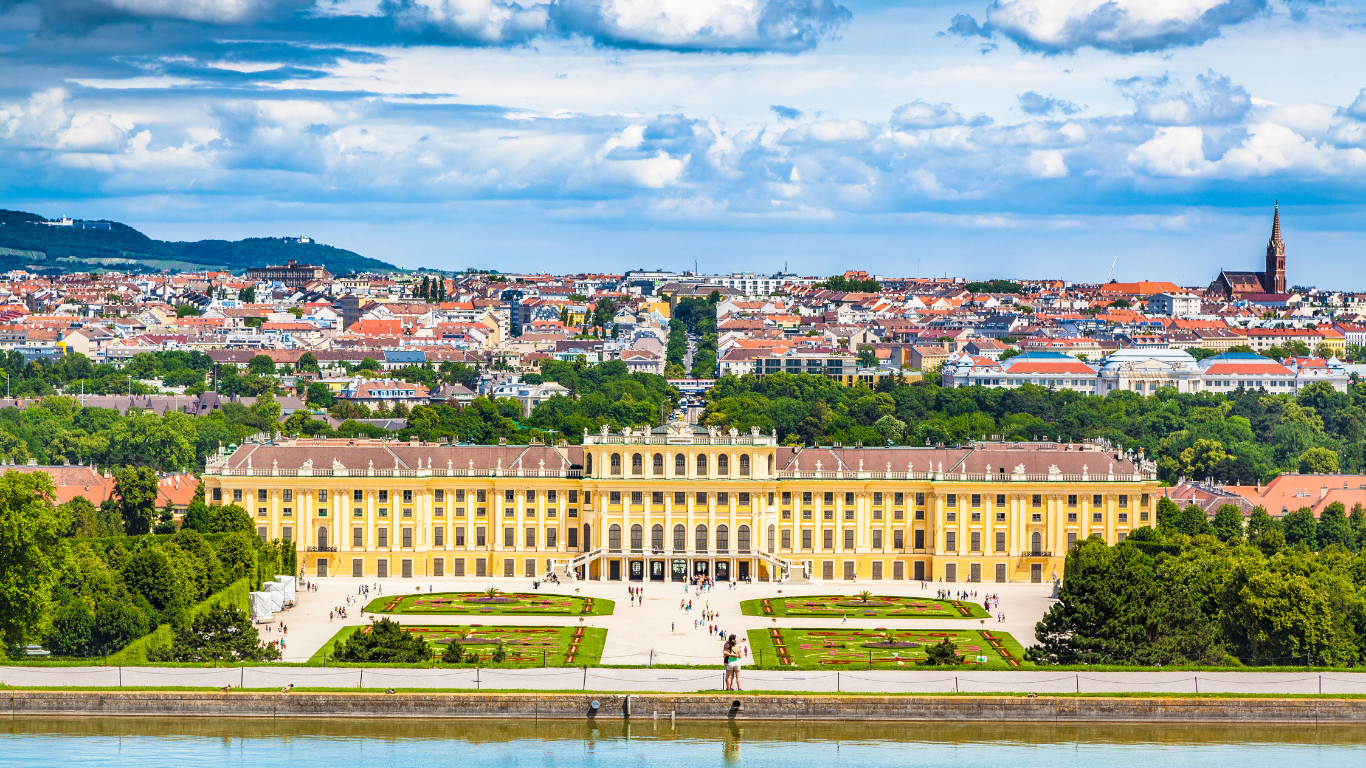
- Why is it exotic? 🤔
A grand baroque palace with royal history and vast, colorful gardens. - Best time to visit 📅
Early morning or springtime, when flowers are in full bloom. - Photography tip 📷
Shoot from the Gloriette hill for a wide, dramatic palace view.
2. St. Stephen’s Cathedral (Stephansdom)
The mother church of the Archdiocese of Vienna is the Roman Catholic St. Stephen's Cathedral. Christoph Schönborn, the Archbishop of Vienna, resides there. It was built on the foundations of two previous buildings, the first of which was a parish church that was dedicated in 1147. St. Stephen's Cathedral, Vienna's most significant ecclesiastical structure, has seen many significant moments in Habsburg and Austrian history and has grown to become one of the city's most identifiable landmarks because of its multicoloured tile roof. From the top to the bottom, there are 256 steps.
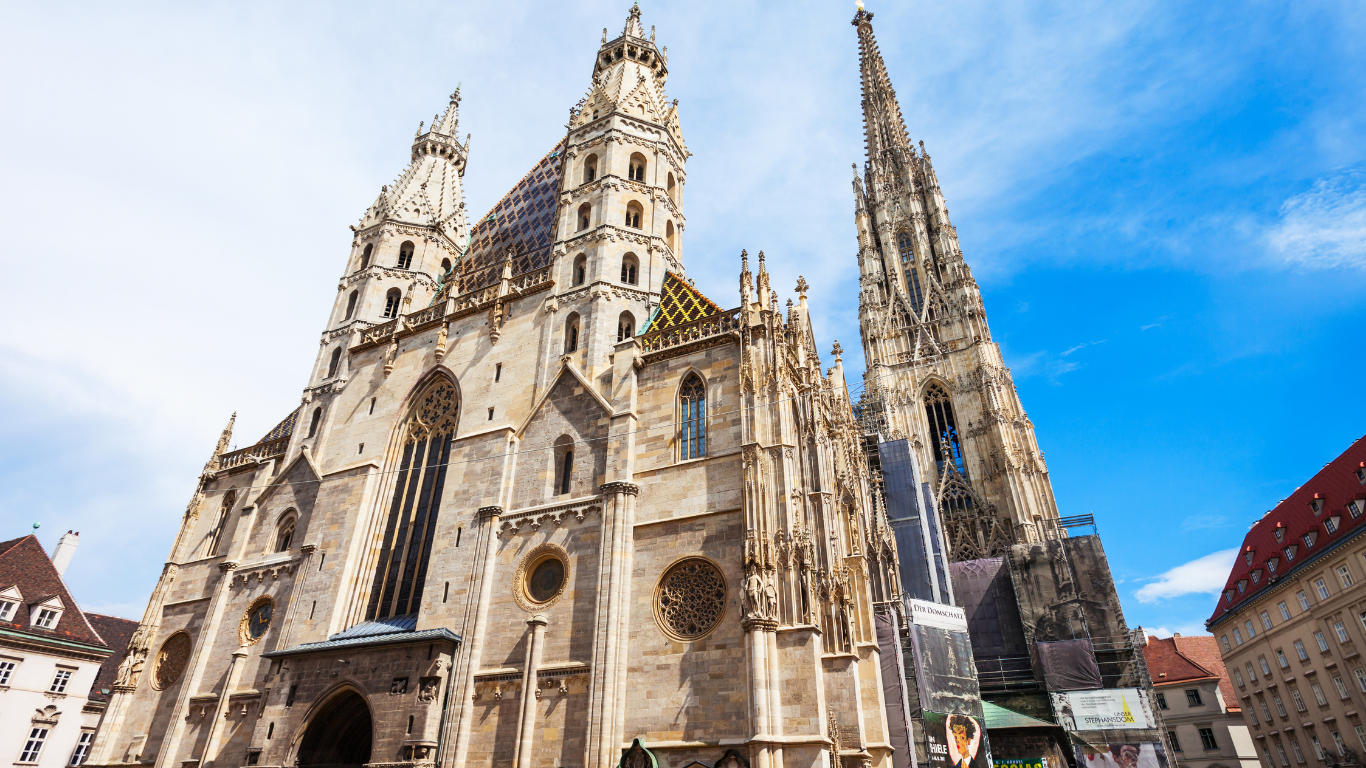
- Why is it exotic? 🤔
This Gothic masterpiece stands at the center of Vienna’s old town. - Best time to visit 📅
Evening or golden hour, when the sun hits the tiled roof. - Photography tip 📷
Capture the patterned rooftop from the side streets or climb the tower for city views.
3. Belvedere Palace
The Orangery, the Palace Stables, and two Baroque mansions make up Vienna's famous Belvedere building complex. The buildings are located in the city's third district, on the south-east corner of the city centre, in a Baroque park setting. The Österreichische Galerie Belvedere, the Belvedere museum, is currently housed there. Baroque sculptures, magnificent wrought iron gates, and ornamental tiered waterfalls and cascades adorn the gardens, which are situated on a gradual gradient. Prince Eugene of Savoy used the Baroque castle complex as a holiday home.
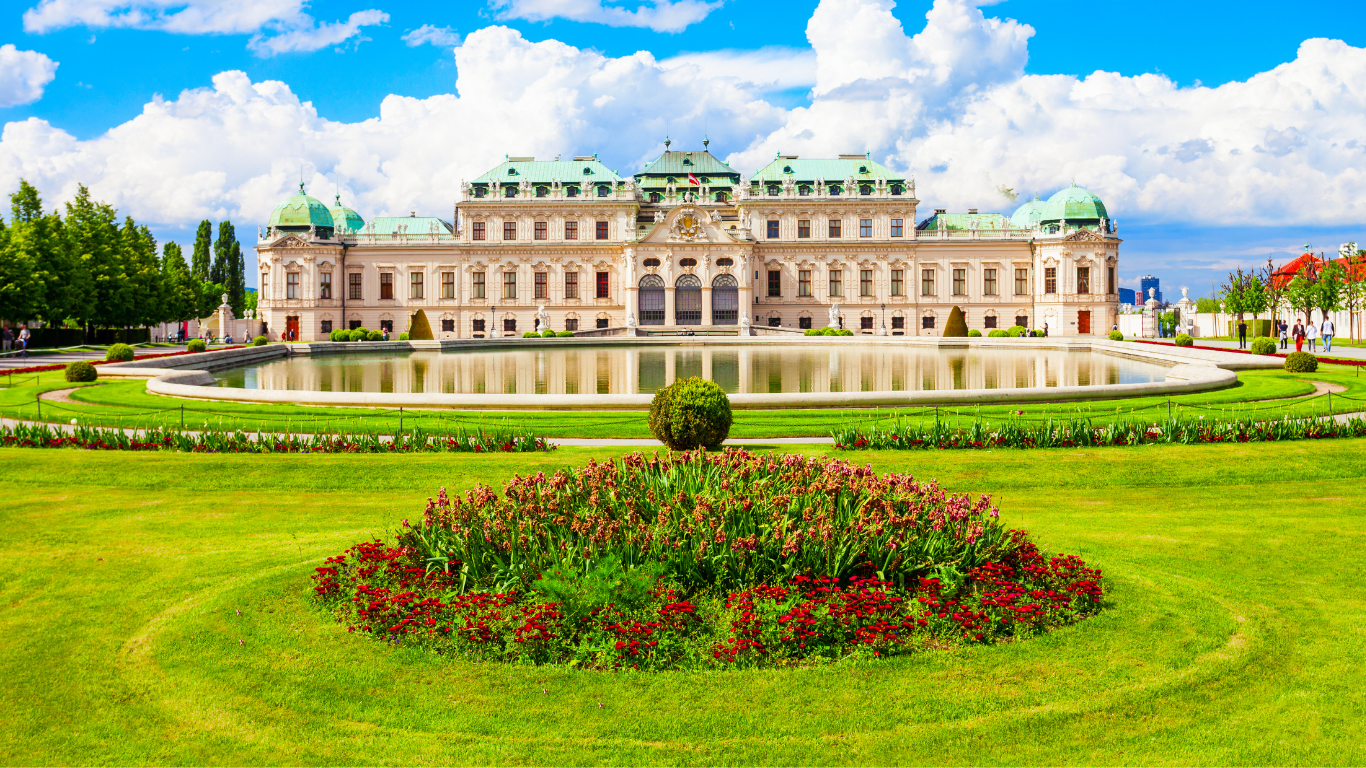
- Why is it exotic? 🤔
Two stunning palaces are connected by a beautiful garden and reflecting ponds. - Best time to visit 📅
Morning or autumn for calm reflections and golden colors. - Photography tip 📷
Use the pond for symmetrical shots of the upper palace.
4. Hofburg Palace & Burgtor
The Hofburg served as Austria's main imperial residence throughout the Habsburg era. Ottokar II of Bohemia constructed it in the 13th century, and it has since undergone multiple expansions. It is situated in the center of Vienna. Since Schönbrunn Palace was the summer house, it also functioned as the royal winter residence. It has served as the president of Austria's official home and office since 1946. The Hofburg region has served as the official seat of government since 1279.
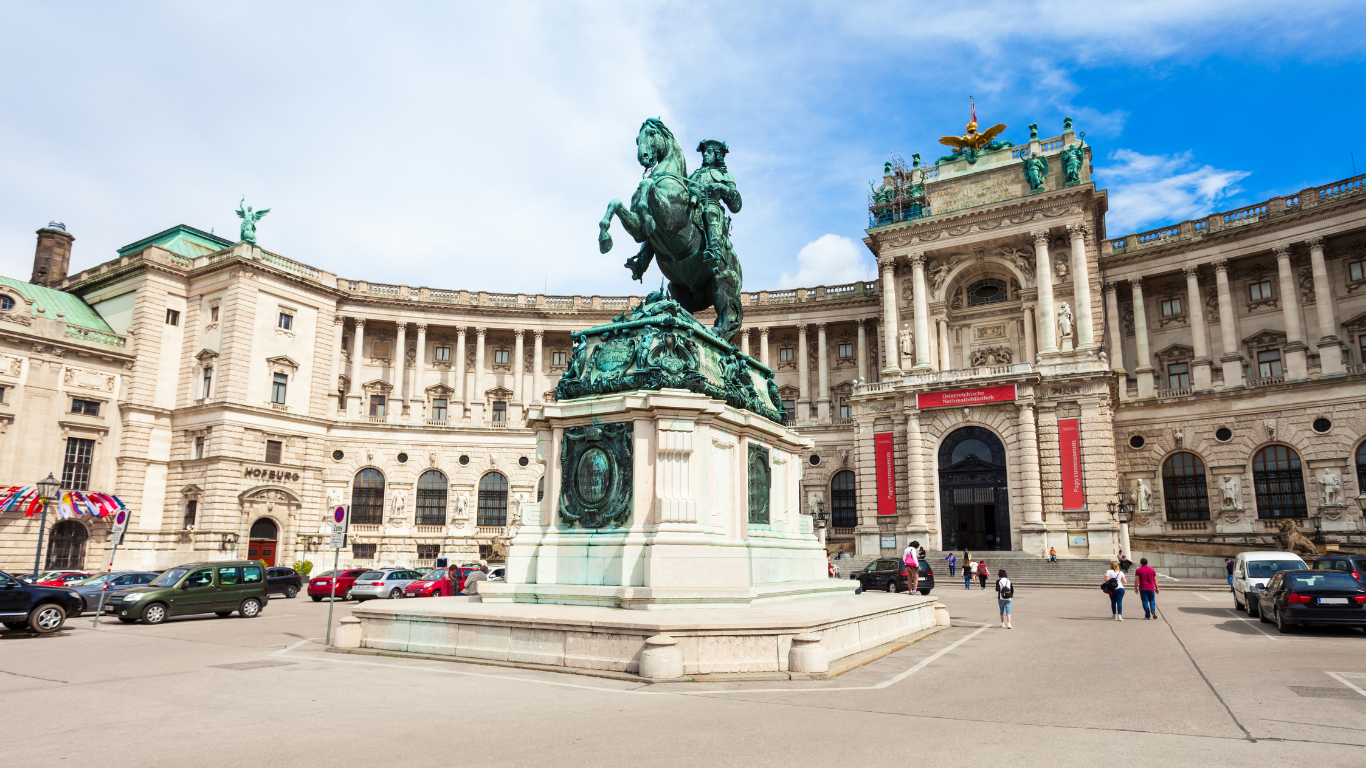
- Why is it exotic? 🤔
Austria’s imperial palace with impressive architecture and courtyards. - Best time to visit 📅
Late afternoon, when sunlight warms the stone walls. - Photography tip 📷
Frame the gates for a strong, dramatic composition.
5. Museum Quartier
The 9-hectare Museumsquartier (MQ) is located in Austria's 7th district. Both modern and baroque structures by architects Laurids and Manfred Ortner may be seen in the Museumsquartier. In April 1998, work on renovating the old court stables got underway. The Museumsquartier opened in two phases, three years later. The construction project cost 150 million euros in total. There are over 60 alternative art organisations in Quartier21, which is located in the Museumsquartier.
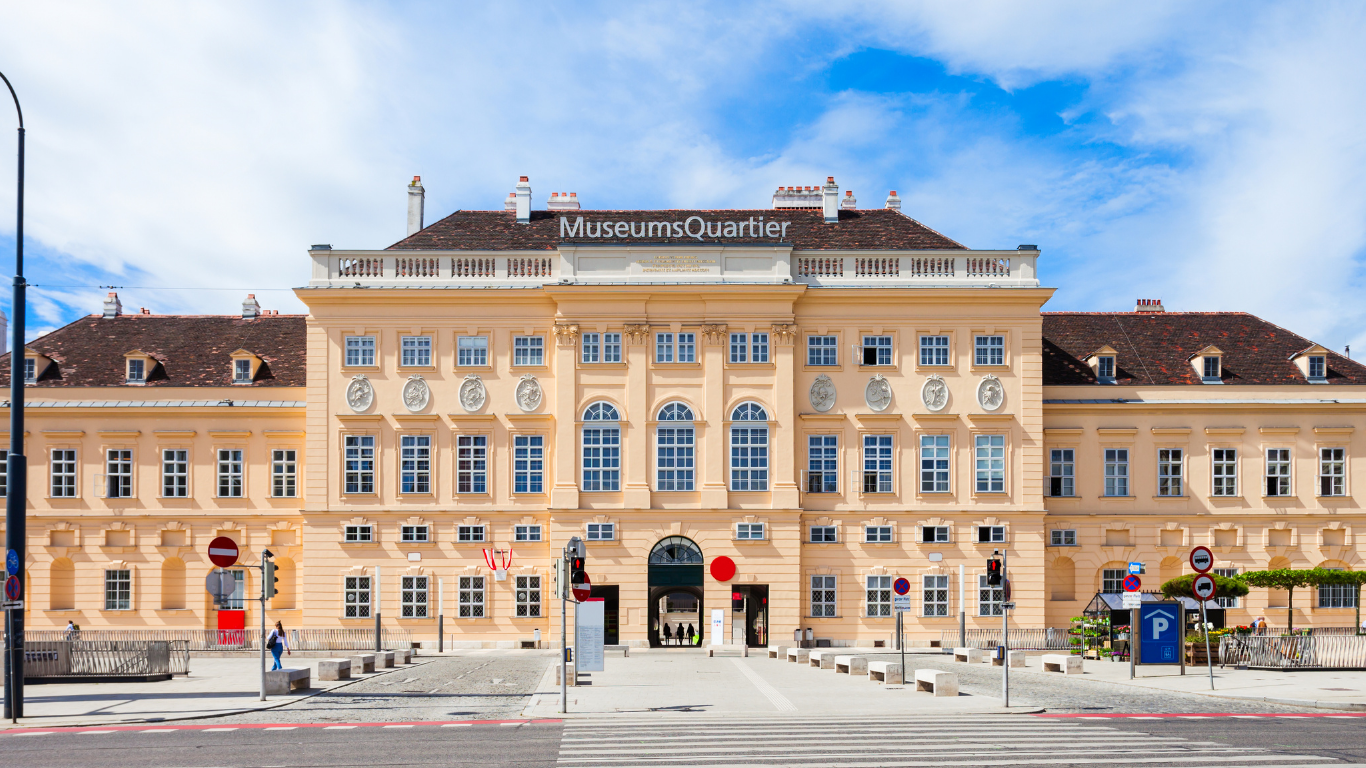
- Why is it exotic? 🤔
A creative space full of museums, cafes, and modern vibes. - Best time to visit 📅
Afternoon on weekends when it’s lively and bright. - Photography tip 📷
Capture the contrast between modern lounge chairs and historic buildings.
6. Prater & Giant Ferris Wheel
At the entrance to the Prater amusement park in Leopoldstadt, the second district of Vienna, stands the Wiener Riesenrad, a 64.75-meter-tall Ferris wheel. It is one of Vienna's most visited tourist destinations, and for many, it represents both the city and the district. Built in 1897, it stood as the tallest surviving Ferris wheel in the world from 1920 until 1985. The wheel's spokes are tensioned steel cables that are powered by a circumferential cable that exits the wheel and travels through the driving mechanism beneath the base.
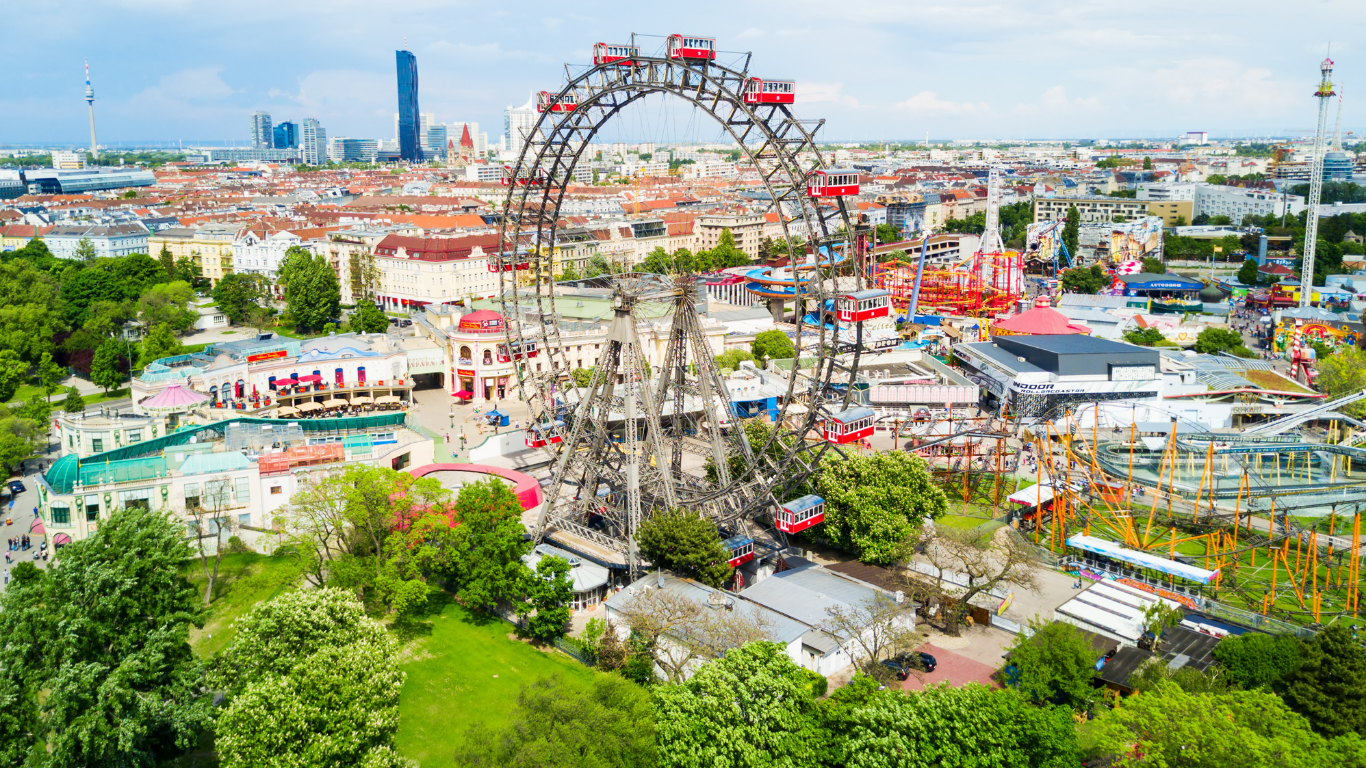
- Why is it exotic? 🤔
A vintage amusement park with Vienna’s iconic Ferris wheel. - Best time to visit 📅
Sunset or nighttime for glowing lights and fun energy. - Photography tip 📷
Try long exposures of the spinning rides for dynamic shots.
7. Karlskirche (St. Charles Church)
Dedicated to Saint Charles Borromeo, a key player in the Counter-Reformation, the Karlskirche is a Baroque church located on Vienna's Karlsplatz. The church is situated between the Innere Stadt, the city core, and Wieden. The church's dome and two flanking columns of bas-reliefs, as well as its function as an architectural counterpoint to the Musikverein and Vienna University of Technology buildings, have made it famous since Karlsplatz was restored as an architectural ensemble in the late 1980s. The church has long served as the parish church and the location of the Catholic student ministry at Vienna University of Technology. It is maintained by the Knights of the Cross with the Red Star.

- Why is it exotic? 🤔
A dramatic baroque church with a lovely pond in front. - Best time to visit 📅
Late afternoon or blue hour when reflections shine. - Photography tip 📷
Use the water to mirror the dome and columns.
8. Albertina Museum & Roof Terrace
In addition to more contemporary graphic works, pictures, and architectural drawings, the Albertina, a museum located in the Innere Stadt, is home to one of the biggest and most significant print rooms in the world, which has some 65,000 drawings and one million old master prints. The museum has two important collections of Impressionist and early 20th-century art on permanent loan, some of which are on permanent exhibition, in addition to the graphics collection it has purchased. There are also temporary exhibits at the museum. The museum is still rated on the list of the world's most visited art museums.
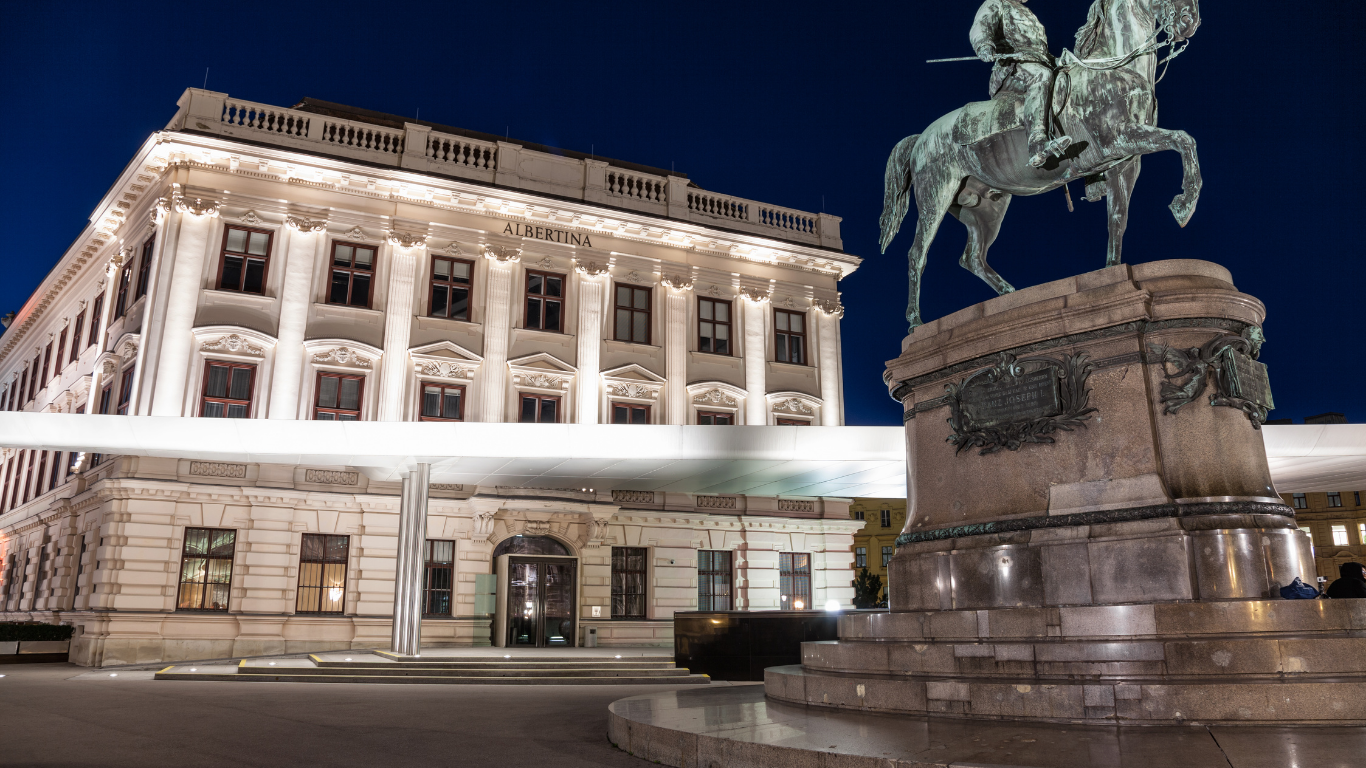
- Why is it exotic? 🤔
A top art museum with a peaceful rooftop view of Vienna. - Best time to visit 📅
Midday or golden hour for clear, soft light. - Photography tip 📷
Use the terrace edge to frame the opera and city rooftops.
9. Hundertwasserhaus
The Hundertwasserhaus is a Vienna apartment block that was finished in 1985 and was inspired by the work of Austrian artist Friedensreich Hundertwasser. This famous expressionist building in Vienna is situated on the intersection of Kegelgasse and Löwengasse in the Landstraße neighbourhood. One of Vienna's most popular structures, the Hundertwasserhaus has contributed to Austria's cultural legacy.
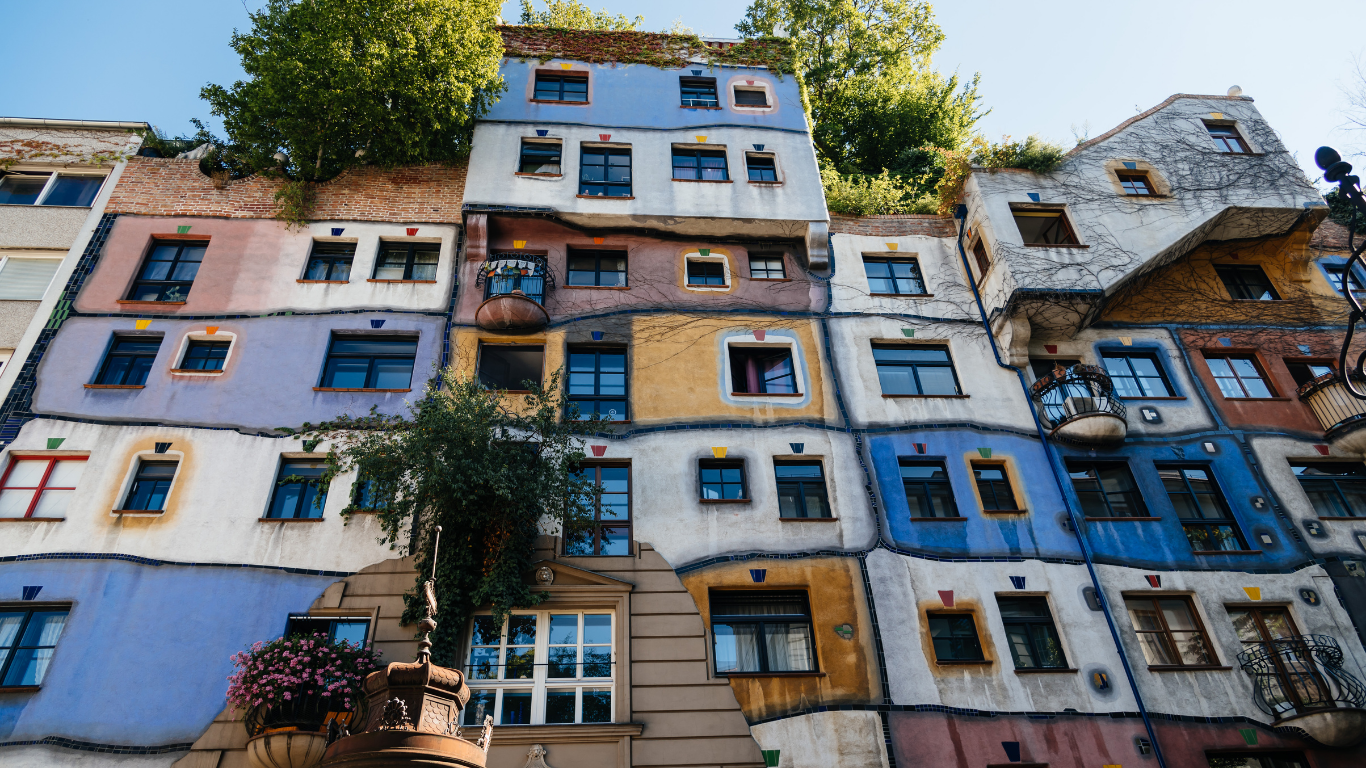
- Why is it exotic? 🤔
A wild, colorful building with uneven lines and nature-built walls. - Best time to visit 📅
A morning when it’s quiet and shadows are soft. - Photography tip 📷
Shoot wide to get the full crazy color palette.
10. Volksgarten & Theseus Temple
The Theseus Temple, designed by Peter Nobile, was constructed in 1829 to house a Canova sculpture in the style of a Greek temple. The nearby massive Äußere Burgtor gates at the main entrance to Heldenplatz square are among the many architectural works in Vienna and other places that bear his name. The neo-classic structure is modelled after a Doric temple in Athens that was finished in 415 BC and devoted to the Greek deity Hephaestus.
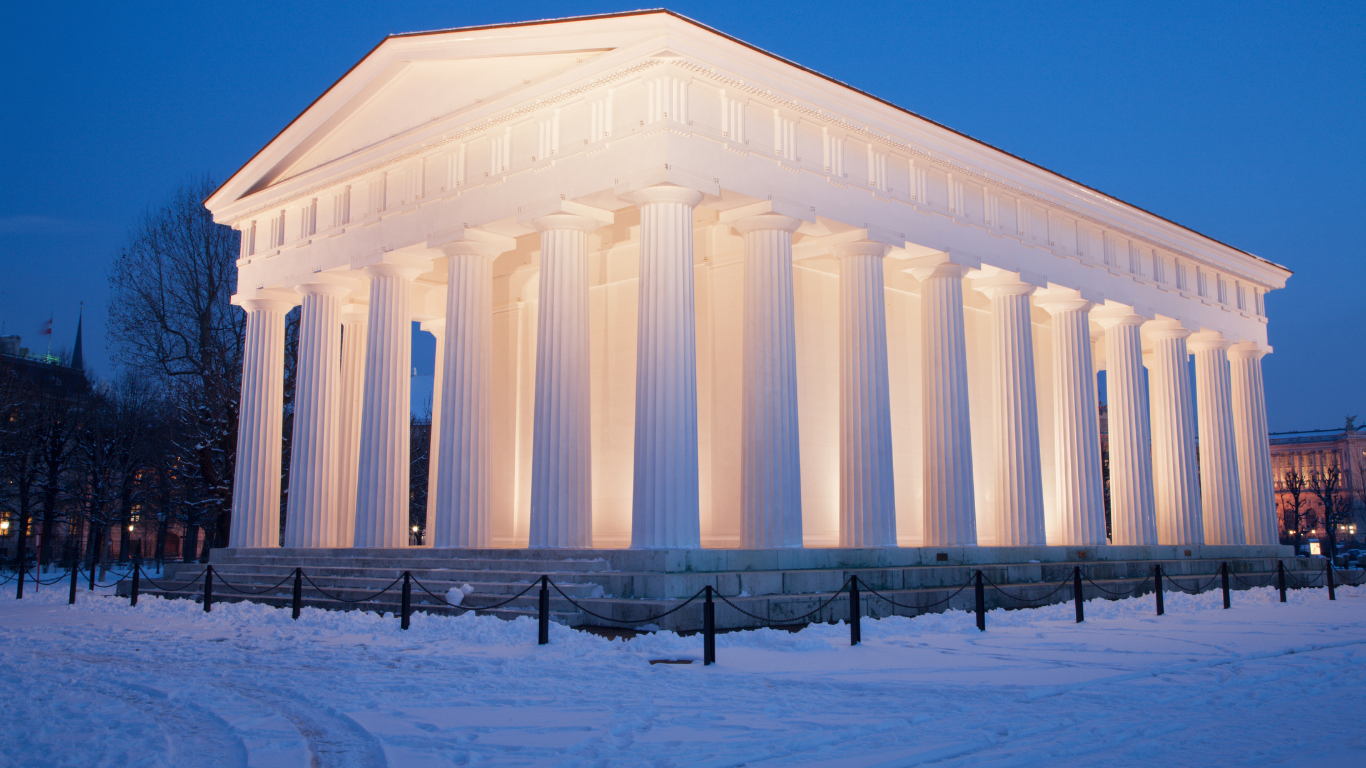
- Why is it exotic? 🤔
A peaceful rose garden wrapped around a neoclassical gem that is a perfect blend of elegance and bloom. - Best time to visit 📅
Late afternoon in spring when roses are in full bloom and golden light touches the temple. - Photography tip 📷
Frame the temple through rose arches for a soft, romantic foreground.
Final Thoughts
These are the top photography spots you won't want to miss in Vienna. However, there is much more to see and enjoy, as the city offers endless photo opportunities. Take a walk and explore more, and make both your day and your photos amazing. Hopefully, this guide will help you capture your best moments in Vienna.
Ready to explore?
Don’t forget to bring extra storage, as you’ll be taking a lot of photos.
Check Out Our Blog
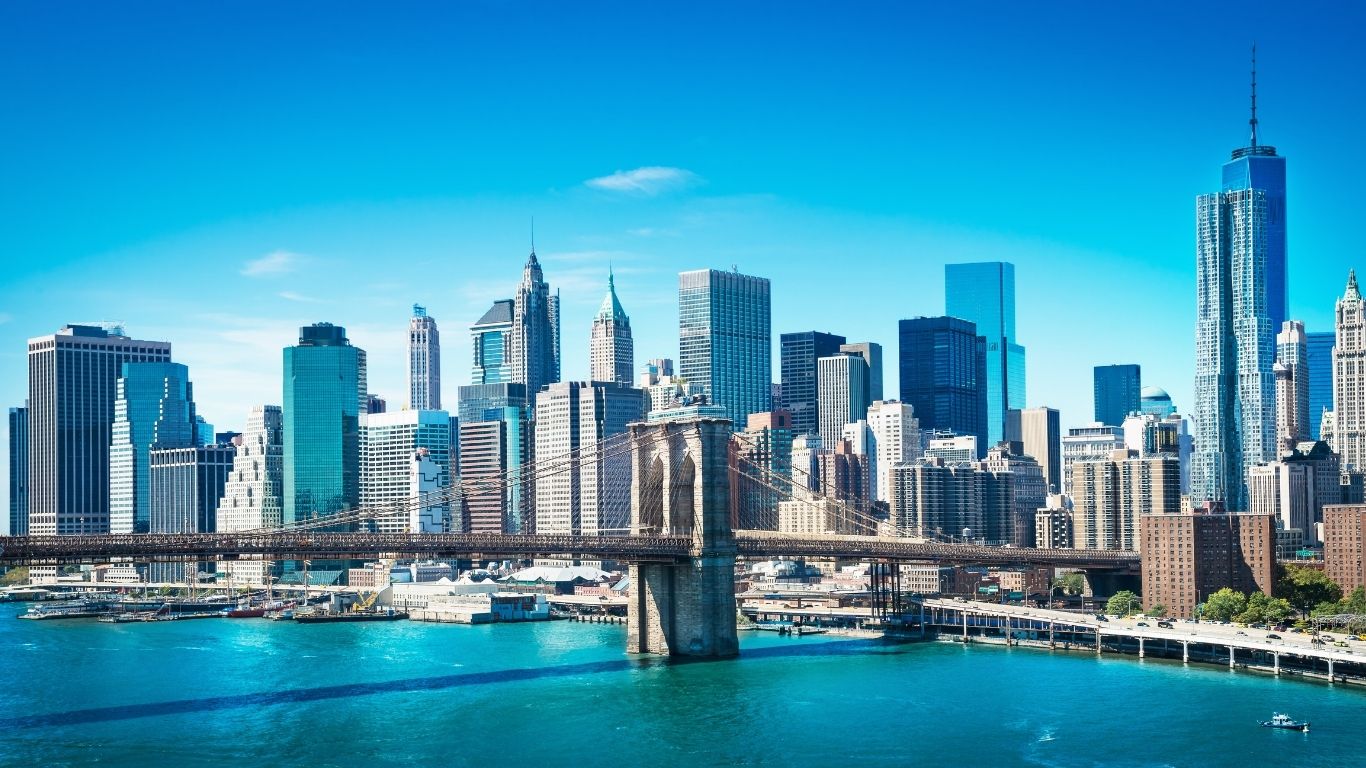
Where to Take the Best Photos in New York? Our 10 Must-See Spots


Best Traveling Apps for Groups: Top 10 You’ll Actually Use


15 Best Cloud Storage for Photographers in 2025







